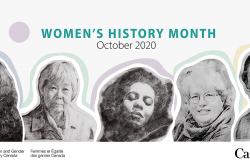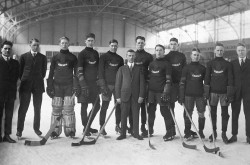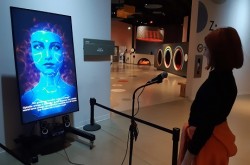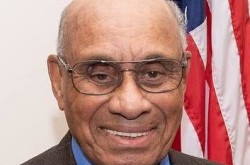Honouring Black Canadians in science and technology

February marks Black History Month, a time to celebrate the achievements and contributions of Black Canadians throughout our nation’s history.
In honour of Black History Month, the Channel presents short biographies of three pioneers in science and technology in Canada.

Anderson Ruffin Abbott: First Canadian-born Black doctor in Canada
1837-1913
Born into an affluent family in Toronto, Upper Canada, Anderson Ruffin Abbott had access to an extensive education. An honours student, he studied medicine at the Toronto School of Medicine and did his medical matriculation at the University of Toronto.
In 1861, Abbott became the first Canadian-born man of Black heritage to become a licensed physician. He worked as one of eight black surgeons during the American Civil War. Abbott returned to Canada in 1866, where he established a medical practice. Admitted to the College of Physicians and Surgeons of Ontario in 1871, he became a prominent figure in Toronto’s Black Community.
Committed to education and integration, Abbott fought against racially-segregated schools while president of the Wilberforce Educational Institute, a well-respected school for Chatham’s Black students preparing for university. In 1878, Abbott was made president of both the Chatham Literary and Debating Society and the Chatham Medical Society. He strongly believed that access to a higher education was essential to success.
An avid writer, Abbott wrote about medicine, the Civil War, Black history, Darwinism, biology, and poetry. His work was published in the Chatham Planet, Colored American Magazine of Boston and New York, the Anglo-American Magazine of London and New York Age.
Abbott died in 1913 at the Toronto home of his son-in-law, Frederick Langdon Hubbard, son of Black municipal reformer William Peyton Hubbard. He is buried in the Toronto Necropolis.

Elijah McCoy: Canadian-American inventor and engineer
1843–1929
Born in Colchester, Ontario, Elijah McCoy’s parents were former slaves who had escaped to Canada using the underground railroad. McCoy was educated in black schools in the Colchester Township, due to the 1850 Common Schools Act which segregated the Upper Canada schools in 1850. At age 15, Elijah McCoy was sent to Scotland for an apprenticeship and study, and was certified as a mechanical engineer.
McCoy moved to Michigan, where he worked as a fireman and oiler at the Michigan Central Railroad. His training as an engineer helped him identify and solve the problems of engine lubrication and overheating. In 1872, he invented an automatic lubricator for locomotive steam engines and obtained his first patent.
A prolific inventor, McCoy held 57 patents by the end of his life. He lacked funding to properly capitalize from the manufacturing of his lubricators, but he sold his patent rights to his employers or investors. The Michigan Central Railroad employed him as an instructor in the use of his new inventions. Later, he became a consultant to the railroad industry on patent matters. In 1920, he established the Elijah McCoy Manufacturing Company and manufactured lubricators with the official McCoy name.
The National Inventors Hall of Fame in Akron, Ohio inducted McCoy in 2001. His remains are interred at Detroit Memorial Park East in Warren, Michigan.

William Peyton Hubbard: Canadian inventor and politician
1842-1935
Born in Toronto, William Peyton Hubbard was the son of American slaves who escaped their plantation in Virginia and came to Canada via the underground railroad. Hubbard was trained as a baker at the Toronto Normal School; the façade of the building is now located on the Ryerson University campus.
Building on his training, Hubbard invented and patented a commercial baker’s oven – the Hubbard Portable – which he sold through his company, Hubbard Ovens.
Known to be a champion of the common man, Hubbard was very successful in municipal politics. He was elected to city council a total of 15 times in his career. He fought to protect public assets from privatization, including the city’s water supply. In 1907, called for “public power” and co-founded the first publicly-owned hydroelectric company with Adam Beck; that company is now known as Hydro One.
A popular figure until his death in 1935, Hubbard is buried at the Toronto Necropolis. Hydro One has established two scholarships in his honour – for black students to study power-related industries at universities and colleges.
































































